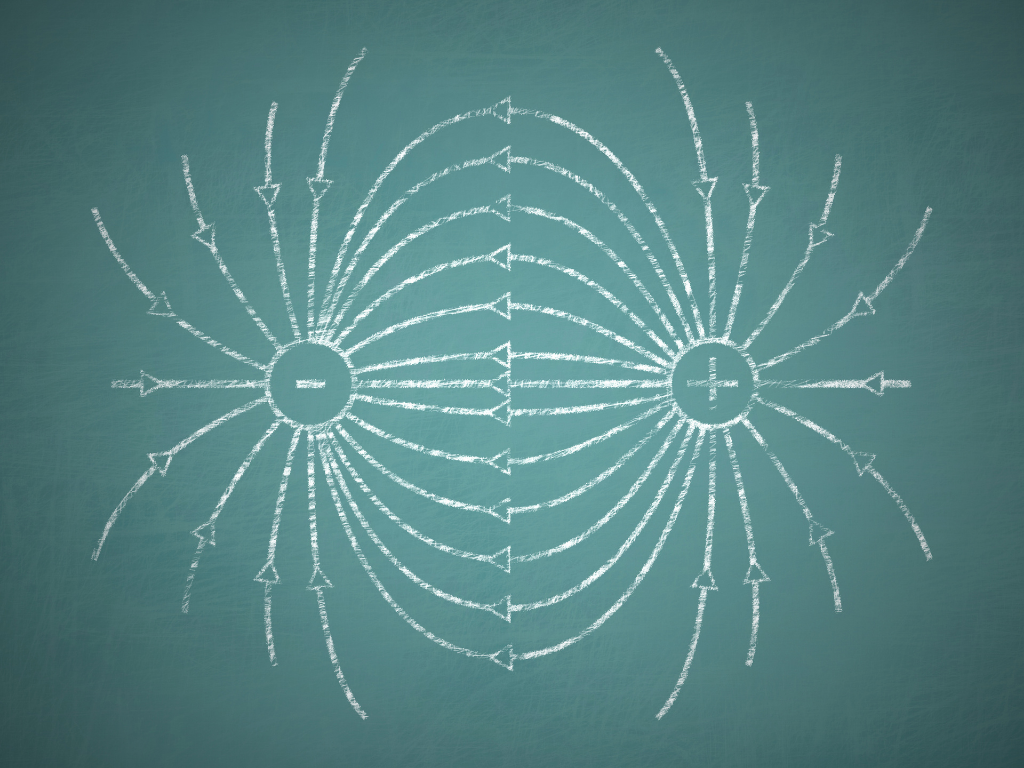Love it or hate it, physics is an immutable part of everyday life. And while it tends to be the bane of many students' classroom existence, it is the language—the raison d'être—for everything that happens around us, to us, and for us, from the technology we use and the color of sunsets to the changing pitch of an ambulance siren as it passes by and the spanking you get when you slip and fall on your butt.
As such, an appreciation of physics shouldn't only be reserved for white lab coat-clad scientists; rather, everybody should have a fundamental grasp of the key laws of physics. To help you do this, the science nerds at Brainscape (present company included) sat down together to noodle on what we thought everyone should know about physics ... and what we came up with you now hold in your virtual hands.
Let's go!
(If you are studying physics in school or college, check out our Physics 101 flashcards! We created this collection of NGSS-compliant smart flashcards to help you master those crucial physics concepts as fast and painlessly as humanly possible, helping you crush that next test or exam!)
1. Laws of physics you should know: Classical mechanics and the laws of motion

If you’ve studied any sort of science, you’ve probably heard the story of Isaac Newton sitting under an apple tree and formulating the basic laws of motion. While the story is partly apocryphal, there is actually some truth to it.
In 1687, Newton published Philosophiæ Naturalis Principia Mathematica, the first book ever to lay out the fundamental laws that govern motion in the universe and they are
Newton's First Law of Motion
Objects at rest will remain at rest, and objects in motion will remain in motion, traveling at the same velocity (speed and direction), unless the object is acted upon by an external force.
Translation: If you threw a ball in a vacuum, like space, that ball would continue flying at the same speed and in the same direction forever. (Assuming it doesn't crash into any space debris or come close enough to a large celestial body so as to be seduced by its gravitational field.) That's because with no forces acting upon that ball—not a puff of wind, nor friction at the molecular level, nor gravity—it would have no reason to stop.
Newton's Second Law of Motion
The force (F) a body exerts upon another body is a product of its mass (m) and acceleration (a), which is the speed and direction at which it's traveling. I.e. F=ma.
Translation: If you're walking to the coffee machine, and Susan from accounting comes tearing around a corner without looking and walks right into you, the force her sweet body exerts upon yours can be calculated by multiplying her weight by the speed at which she's walking.
Newton's Third Law of Motion
When one object exerts a force on another object, the second object exerts an equal and opposite force on the first.
Translation: If you walk into a signpost, your face exerts a force upon that signpost, which delivers an equal but opposite force to your face. Of course, the signpost will be absolutely fine. Your face, on the other hand, not so much.
These may sound a little abstract but, as I've attempted to illustrate in my "translations", Newton's Laws of Motion all have very real, observable effects in everyday life! A ball rolls downhill because gravity exerts a force on it; impacts tend to do damage because two bodies colliding with each other exert a force that is the product of their mass and acceleration; and signposts in the fact hurt because they exert a force back onto your face, which isn't built for metal high fives.
Also, the heavier the mass of the body in question, the greater the force it exerts in such collisions, but also, the greater the force that's required to move it. You see?
Scthienth!
2. Laws of physics you should know: Electromagnetism

You see it every day, it warms our planet, governs our circadian rhythms, microwaves our dinner, tans our skins, delivers radio signals to our, well, radios, and a myriad of other fundamental physical stuff. But can you even define electromagnetism? Chances are you can't (I'm assuming, since you're Googling has landed you here on this page). But I'm going to change that right now ...
Atoms are made up of positively and negatively charged particles, called protons and electrons, respectively. When electrons flow, they generate magnetic fields (yes, as in the kind that moves metal objects). The interaction of electric currents and magnetic fields is referred to as electromagnetism.
You may be asking yourself, why should I care?
Aside from being one of the four basic forces that govern the entire universe, electromagnetism explains why and how the flow of electrons within the Earth's molten core generates the magnetic field that shields our planet from incoming solar radiation. Otherwise, we'd cook to death. Death by gamma radiation = No fun.
Electromagnetism is also the branch of physics that explains the behavior of visible light, electricity, and the other types of energy on the electromagnetic radiation spectrum, from gamma and ultra-violet radiation to microwave, radio waves, and infrared, etc., ALL of which are kind of a big deal to human civilization and our technology!
[Psssst. Need a little help mastering these basics? Check out Brainscape's collection of expert-curated and user-generated flashcards for physics, like Physics 101 or AP Physics. Our study platform leverages key cognitive science principles to help you learn way more efficiently while breaking complex subjects like physics down into their atomic facts.]
3. Laws of physics you should know: Relativity

General relativity is a basic concept in physics that is often described using the analogy of a moving vehicle. Let’s say you’re riding in a car traveling at 60 mph. It’s a convertible, and the top is down. You throw a ball directly upwards. Relativity helps to explain the fact that there are two different perspectives on what happens to the ball.
Can you name those perspectives?
From your perspective, inside the car, you have applied one upward force to the ball. From the perspective of someone outside the car who is standing still, the ball was already traveling 60 mph inside the car when the second force was applied. This is a simple example, but can be expanded to larger scales: for example, the Earth is currently rotating around the sun at around 67,000 mph. Ordinarily, that would blow the hair off your head. But due to relativity, it certainly doesn’t feel like that to us.
The theory of general relativity was expanded in the early 1900s when Albert Einstein cooked up special relativity. In his writings, Einstein theorized an “absolute speed limit” for light—a speed that could not be exceeded regardless of relativity. Wait ... what?
Okay, imagine this: you’re stationary in the middle of space, measuring the speed that light is moving past you. The light source is nearby, stationary. You measure the speed of light as 671 million miles per hour. Then you conduct two further experiments. In the first, the light source is now being propelled away from you at a speed of 300 million miles per hour. In the second, the light source is moving towards you at the same speed. Each time you measure the speed of the light, however, the number is the same: 671 million miles per hour.
What does this mean?
The fact that the speed of light is the same in spite of the movement of the light source means that something else must be changing. Can you guess what it is? That's right. TIME. Time is speeding up or slowing down depending on how fast that light source is moving towards or away from you. *Ka-pow*
Full disclosure: this is probably confusing to the layperson, I know. but the minimal take-home knowledge is that relativity—both general and special—is an important branch of physics that is bursting with braingasms and mind-blowing revelations about the universe, light, and celestial bodies like black holes.
[Step aside Einstein, here are six modern physicists you should know! (Even if it is just for your next pub quiz night.)]
4. Laws of physics you should know: Thermodynamics

The study of thermodynamics revolves around the relationship between heat, energy, mechanical work, and temperature. There are four laws governing thermodynamics that—just to make things more complicated—are numbered zero through three. These laws essentially explain what happens as energy is transferred from one place to another, and from one form to another.
The most important laws of thermodynamics are:
The zeroth law of thermodynamics.
I was today-years-old when I learned that "zeroth" was a word. Anyway, the zeroth law of thermodynamics tells us about the state of thermal equilibrium of a system, which describes the exchange of heat and the temperature of the system. Kinda useful if you want to know whether to pack a sweater.
The first law of thermodynamics, or the law of conservation of energy.
This law states that energy is neither created nor destroyed. It can only be converted from one form to another.
So let's say that you take four hydrogen atoms and fuse them together into a single helium atom, which is what stars do all the time. The net atomic weight of four hydrogen atoms is actually greater than that of a single helium atom which means that a teensy tiny amount of physical matter goes missing during the equation. What happens to it? It gets converted from physical matter (mass) into light and heat energy.
In one paragraph I have just explained how stars forge helium from hydrogen atoms, releasing positively nuclear amounts of light and heat energy in the process. Boo-yah!
The second law of thermodynamics
The second law of thermodynamics states that processes that involve the transfer or conversion of heat energy are irreversible and always move toward more disorder or, in physics terms, entropy.
In other words: you can't unscramble an egg.
The third law of thermodynamics
The third law of thermodynamics states that the entropy of a system approaches a constant value as the temperature approaches absolute zero, which is actually -273 degrees Celsius. The entropy of a system at absolute zero is typically zero, and in all cases is determined only by the number of different ground states it has.
What the heck does this mean? Basically, at the atomic level, what we perceive as “temperature” actually refers to atomic movement. On a hot day, for example, solar energy excites the atoms in the Earth’s atmosphere, causing them to vibrate rapidly. This vibration carries energy that is transferred to our skin, making us feel warm. Similarly, "cold" atoms are those that move less. It's not that heat makes atoms move; it's that atom movement is heat. Oooooh, aaaaaah!
[Need help getting to grips with physics? Check out 'How to study physics: 5 killer strategies' as well as our seminal study guide on studying more efficiently in general.]
Use Brainscape to advance your physics

So, there are the four more important physics concepts everyone should know about this fathomless realm of inquiry. Naturally, it's forgivable if a few went over your head but at least you have a newfound appreciation for this realm. Or at least that's the hope.
If you're actually studying physics as a high school or college student, we really encourage you to get Brainscape—the world's smartest study app—in your corner because it can help you absorb the important foundational facts twice as efficiently as any other study method. [Check out Brainscape's expert-curated flashcard collections for AP Physics, Physics 101 (NGSS aligned), or MCAT Physics!]
Also, through a multi-year project involving hundreds of students, teachers, professors, and experts from different fields, Brainscape has compiled an enormous set of knowledge across a huge range of other subjects. And you can access those flashcards right here, in our Knowledge Genome.
Eureka!
